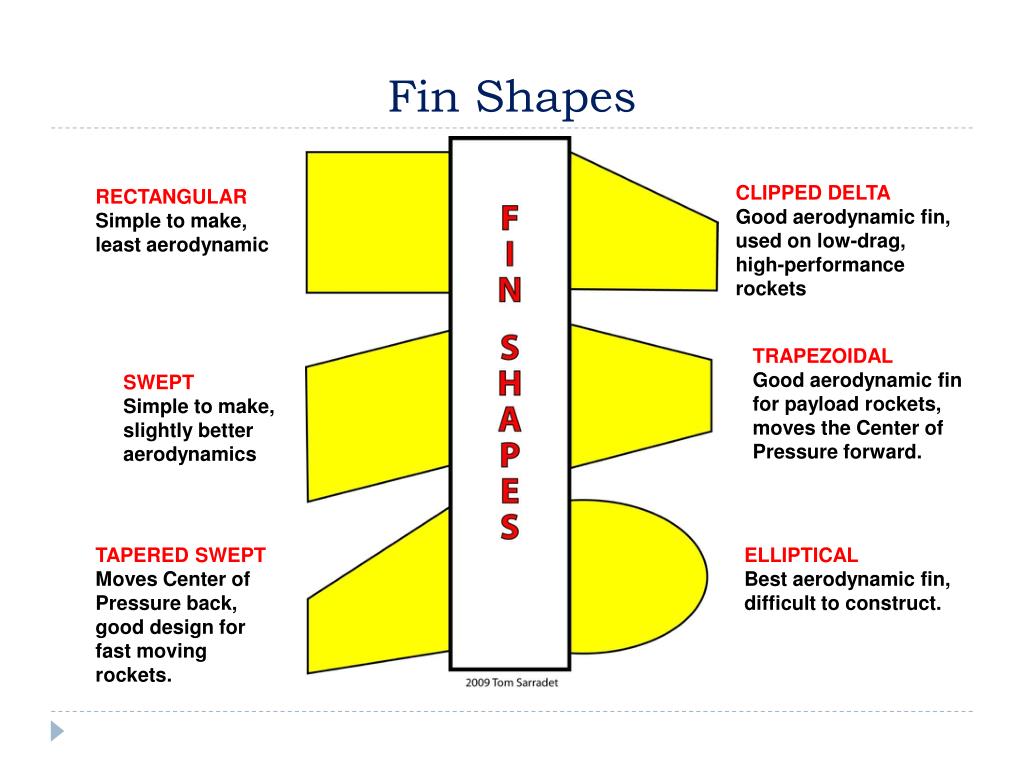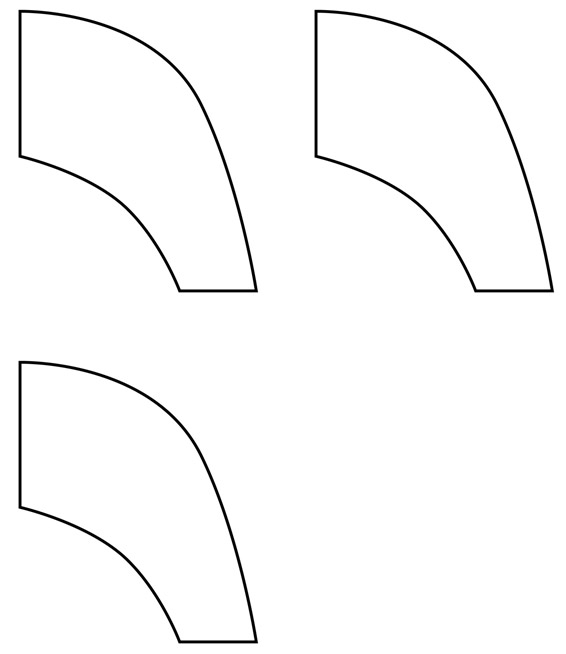

Now take the plywood sanding block, and sand away. One can make this strip longer than the fin, and use it to take the fin down to the large plywood block. This piece is meant for your one of your first rockets in career mode. Take a strip of masking tape and place it on the fin, masking off the area behind where the bevel is desired.In fact, it is often possible to tell what speed regime an aerial vehicle was designed to fly in simply by observing the shape of its nose. Moreover, the same principles hold true for aircraft, missiles, bombs, and other flying vehicles as well. This rocket nose design is easy to construct, but not very aerodynamic in comparison to more rounded designs. These rocket noses call back to the first days of modern rocketry, and are often found in model rocket replicas of old rockets such as the Saturn V.

Unlike more advanced winglets, the Basic Fin does not have a built-in control surface. The ideal aerodynamic nose shape is primarily related to the speed at which the rocket flies. Conic nose shape: Conic nose shapes are rocket noses that come to a point. What kind of cardboard do you use for Bottle Rockets Milk or juice carton cardboard works well for fins, as it is strong, lightweight, and water-resistant. It also has an extremely low impact tolerance of 4 meters per second however, its shape combined with the above factors makes it unlikely that it will ever be used for landing. What fin shape is best for a rocket elliptical fin shape Theoretically, the best fin shape for a rocket is an elliptical fin shape.

This is the formula: ( (d+0.5) X L)/6 d is the outside diameter of the rocket tube. It will explode on reentry, and if a rocket accelerates quickly enough, the fins may also overheat partway through its ascent. There is a formula to help work the size of the fin for your rocket this is as follows. The Basic Fin has the lowest heat tolerance of any fin, making it prone to overheating. For very aerodynamically unstable rockets, a larger fin (such as the AV-T1 Winglet) should be used instead. As the smallest fin, it produces very little drag this reduces delta-V drag losses, but makes the fins less effective. The Basic Fin is the cheapest and lightest winglet it is useful for creating cheaper rockets in Career mode. By attaching a set of Basic Fins to the base of the rocket, this drag will pull the back end of the rocket backwards, keeping it pointed prograde. They provide drag, which helps keep the rocket pointed in the right direction. Jebediah Kerman's Junkyard and Spacecraft Parts Coįins are usually placed at the back of a rocket. This simple bolt-on aluminum fin may not be the cutting edge of aerospace engineering but it's dirt cheap and will make your rocket slightly less unstable. How do the fins, nosecone, size, shape and length affect the distance the rocket travels. How do the independent variables affect the dependent variable ? I'm struggling to evaluate which fin shape and cross section is actually the best for any specific rocket case (mine is subsonic, M0.8) for my report. My role is the 'fin aerodynamics' portion of the rocket. image3 files - representative fin/wing/stabilizer shape uses predefined.

The distance the rocket travels is our dependent variable. Save yourself the trouble of cutting your own plywood fins with thee sturdy through-the-wall (TTW) 1/8 inch thick laser cut plywood fins. I'm in the middle of a project for my university to design a low altitude (10,000ft) rocket. Lazarus Sub-form, Object Pascal, FORTRAN, Model Rocket Fins, and Glider Wings. We will then change one independent variable and see if the average distance changes. This will be our control rocket and it will allow us to compare other rockets to it. The elliptical fin shape placed on the Avion model rocket kit, and put into a virtual wind tunnel on a computer has the lowest induced drag. We will build and launch a rocket and find the average distance it travels. The main advantages of grid fins includes (1) favorable lift characteristics, (2) very high stall angle of attack, (3) low hinge moment due to low chord length, hence small size of needed control actuator, (4) can be easily folded for efficient packaging, storage, and transport, (5) high strength to mass ratio (Theerthamalai, 2007, Peng et al. We call these variables independent variables. We are trying to determine which variable (fins, nosecone, weight, length) affect the distance our rocket travels. In a scientific investigation, we try to identify how much one "thing" affects another "thing." We call these "things" variables. Let's do a science experiment to find out. Which of these "things" matter most? How much do they each affect the distance of rocket flight. We came up with a few ideas: weight, length, nosecone shape and size, fin shape and size, and the number of fins on the rocket. As a class we discussed "things" that may affect the distance our rockets will travel.


 0 kommentar(er)
0 kommentar(er)
